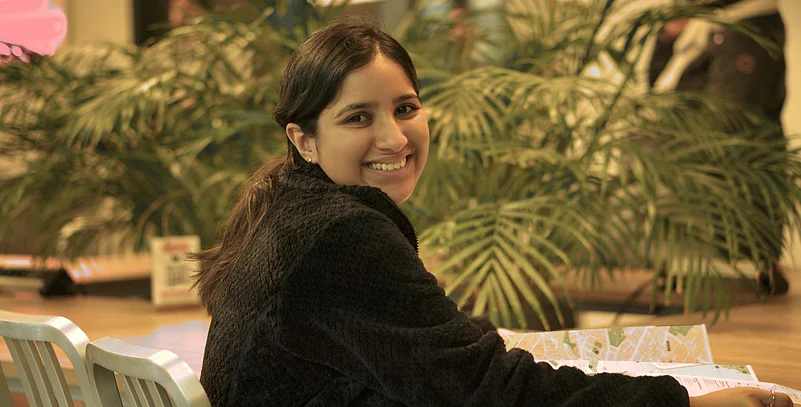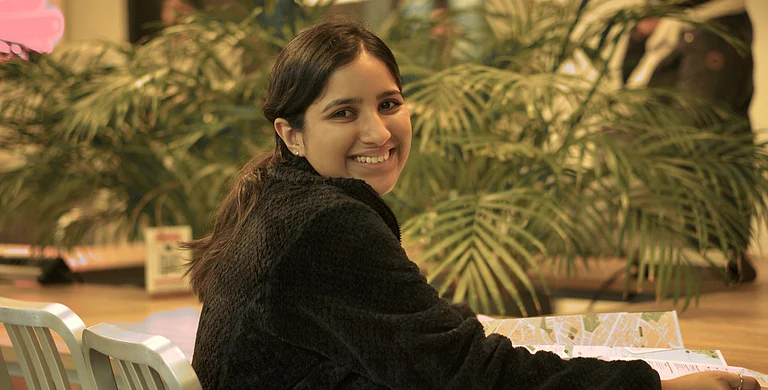In an increasingly digital world, ensuring that apps, websites, and online services are usable for everyone isn’t just a nice-to-have, it’s essential. We spoke with Saloni Pasad, a UX Design expert specializing in inclusive design, about why accessibility should be at the heart of every digital product.
Interviewer: To begin, what exactly is accessibility in UX/UI design?
Saloni: Accessibility in UX/UI design means creating digital experiences that anyone can use, regardless of their abilities or circumstances. It’s about removing barriers that might prevent someone from reading, navigating, or interacting with an app or website. For example, high-contrast text helps someone with low vision read outdoors, while voice commands can assist users who have limited mobility. Accessibility isn’t about checking off a list of rules, it’s about designing for real human challenges.
Interviewer: How do you define accessibility in a way that goes beyond traditional notions of disability?
Saloni: I view impairment as something fluid. It can be situational, temporary, or permanent. Sun glare, fatigue, environmental noise, recovery from an injury, or navigating across languages, these circumstances create real barriers. Designing for these contexts expands the usability of a product for everyone. Instead of focusing on diagnostic labels, I focus on human challenges: difficulty with memory, difficulty distinguishing color, difficulty manipulating small controls. When the design centers on human experience, solutions become clearer and more humane.
Interviewer: As digital products reach increasingly global audiences, how has the role of accessibility evolved?
Saloni: The evolution has been significant. Accessibility is no longer viewed as a special initiative; it’s a competitive advantage and an ethical imperative. Companies such as Apple, Google, and Microsoft have shown that when accessibility is embedded into the foundation of a product, the result is greater user trust, broader reach, and sustained relevance. Accessible design ensures that everyone can participate fully in digital spaces, and that inclusivity leads to stronger, more resilient products.
Interviewer: Based on your work, what are some common accessibility barriers that teams often overlook?
Saloni: Several issues recur across many products. Limited keyboard accessibility is one. Not everyone uses a mouse, so providing logical tab order and visible focus states is essential. Poor color contrast is another frequent barrier, affecting both users with low vision and anyone reading in bright light. Missing alt text leaves screen reader users without crucial context. Complex navigation increases cognitive load. Forms often lack descriptive labels or meaningful error messages. Even vague link text like “click here” can isolate users. These problems are solvable with small, intentional adjustments that make interfaces more welcoming.
Interviewer: What role does empathy play in your design process?
Saloni: Empathy is the foundation. It means grounding design decisions in lived experiences rather than assumptions. I rely on interviews, accessibility audits, and usability testing with a diverse range of participants. Guidelines are important, but they can’t predict every barrier. Real users reveal what truly works and what doesn’t. I also incorporate personas based on real challenges, people who are tired, distracted, recovering from injury, or navigating across languages. These perspectives help teams design for real situations rather than ideal scenarios.
Interviewer: Accessibility often requires collaboration across multiple roles. How do you ensure that happens?
Saloni: Accessibility is strongest when ownership is shared. Designers provide clarity and structure. Developers use semantic HTML and ensure compatibility with assistive technologies. Content teams create readable hierarchy, precise language, and meaningful alt descriptions. Project managers build accessibility reviews into timelines instead of treating them as optional. When each role participates early, accessibility becomes part of the product’s DNA rather than a last-minute fix.
Interviewer: For teams or designers just starting to deepen their accessibility mindset, what core principles would you recommend?
Saloni: First, accessibility benefits everyone. Tools created for specific needs often become mainstream conveniences. Second, design decisions should focus on human problems rather than checklists. Ask what would support someone with low vision, someone multitasking, or someone exhausted at the end of the day. Third, human diversity is not an edge case. Designing for a wide spectrum of users is simply good design. And finally, recognize that minor friction for one user can be a complete barrier for another. Improving accessibility strengthens overall quality and user satisfaction.
Interviewer: Accessibility has sparked several major innovations in the industry. How do you see that continuing?
Saloni: Many widely used features, captions, voice assistants, speech-to-text, started as accessibility tools. Today they’re everyday conveniences. This pattern continues. As Eve Andersson from Google noted, the accessibility challenges of today often become the breakthroughs of tomorrow. Inclusive design doesn’t just solve problems; it expands what technology can do.
Interviewer: To close, what guiding message shapes your approach to design?
Saloni: Accessibility is inseparable from quality. When we design with inclusion at the center, products become more intuitive, more human, and more equitable. Every accessible decision broadens participation and strengthens the digital environment. It’s ongoing work, but each improvement creates a more open and usable world for everyone.


























